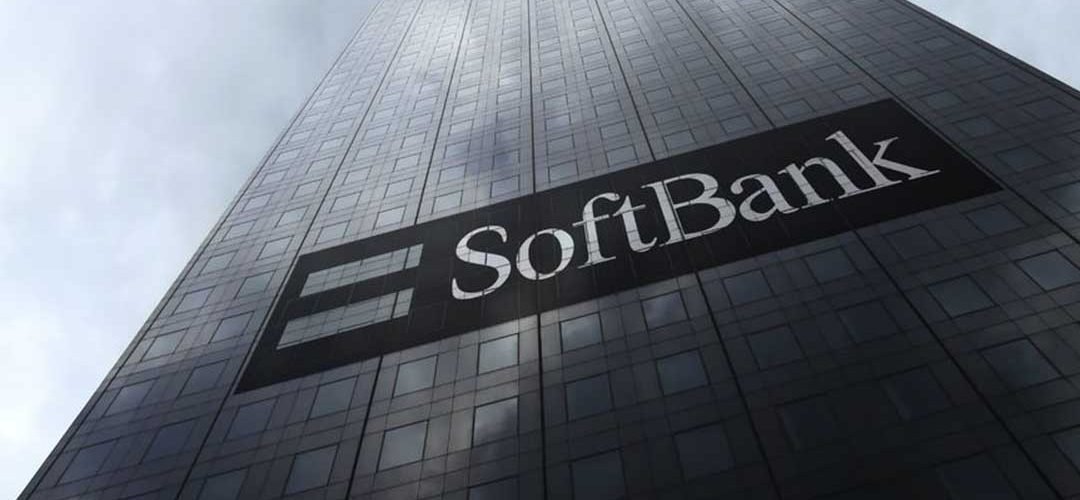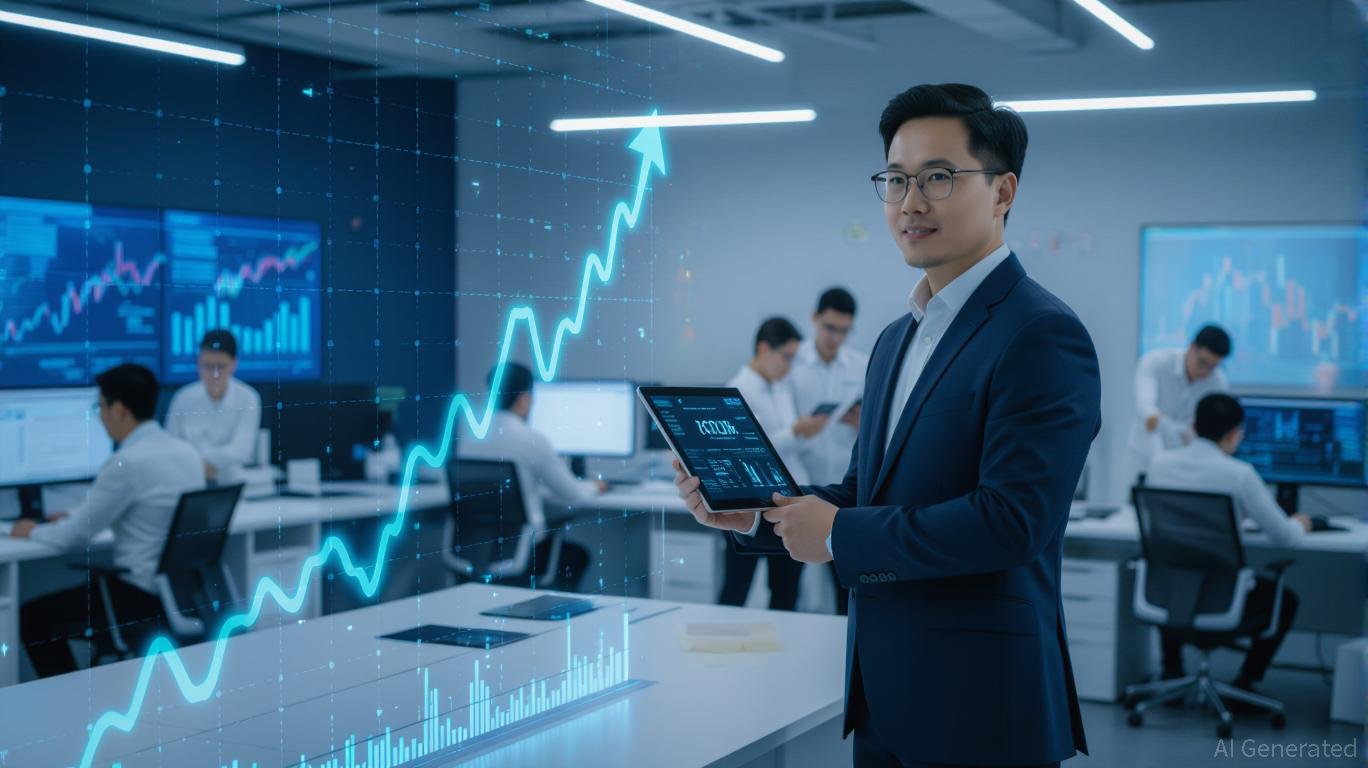Tools & Platforms
World-1st roadside AI tech that prevents animal-vehicle collisions tested

A team of researchers funded by iMOVE Cooperative Research Centre (CRC) has successfully tested a world-first roadside technology that prevents animal-vehicle collisions in regional Australia.
The Large Animal Activated Roadside Monitoring and Alert (LAARMA) system was developed through a collaboration between the University of Sydney, Queensland University of Technology (QUT), and the Department of Transport and Main Roads Queensland.
The system uses artificial intelligence to detect animals near roads and alert drivers in real-time. By sharing their system as a freely available open-source resource, the team behind it hopes to save many endangered species worldwide.
LAARMA: An AI animal detector
The new system’s code will be freely available on GitHub, the collaborative platform where developers can share their code.
According to a press statement, this could enable conservation efforts worldwide to protect a wide range of endangered species. Examples include red pandas in Nepal, giant anteaters in Brazil, and snow leopards in Central Asia.
The team trialed the LAARMA system in Far North Queensland, a region where cassowary collisions are frequent. The system combines pole-mounted sensors—RGB cameras, thermal imaging, and LiDAR— with self-training AI that improves its detection accuracy over time. It warns drivers via flashing Variable Message Signs (VMS).
During a five-month field trial in Kuranda, a cassowary hotspot, LAARMA achieved a 97 percent detection accuracy, recording over 287 sightings. It also resulted in vehicle speed reductions of up to 6.3 km/h in the area.
A self-teaching system
Unlike traditional systems requiring human reprogramming, LAARMA’s self-supervised AI learns from each sighting. According to the researchers, they have recorded an improvement from a 4.2 percent initial detection rate to 78.5 percent by the trial’s end.
Dr. Kunming Li from the University of Sydney’s Australian Centre for Robotics highlighted LAARMA’s adaptability: “It doesn’t just function—it evolves,” he explained. “It learns what a cassowary looks like in varied conditions, making it more reliable over time.”
As for the messages on the VMS, QUT researchers applied behavioural science to design effective warning messages, tested through focus groups, driver surveys, and simulator trials.
“This protects endangered species like cassowaries while reducing risks for drivers,” explained Professor Ioni Lewis, project co-lead. “Hitting a cassowary at high speed can be catastrophic.”
Since 1996, 174 cassowaries have been killed by vehicles, with the true number likely higher.
“Cassowaries on or near roads is part of life in Far North Queensland,” said Ross Hodgman, TMR’s Regional Director North Queensland.
“We are committed to protecting this keystone species, not just for the important role they play in the health of the Wet Tropics Rainforest, but to reduce crashes from either a direct hit or a driver swerving to avoid a bird.
Tools & Platforms
Janus Health Joins Cipher Collective as Revenue Cycle Technology Provider in AI-Enabled Healthcare Initiative – geneonline.com
Tools & Platforms
SoftBank rides tech rally with AI investments, but will they pay off?

SoftBank Group has been among the top performers on Tokyo’s Prime market this year, surging on the back of a US tech rally powered by an artificial intelligence boom.
The conglomerate’s increasing AI investments have fueled hopes for lucrative returns, but some investors are still mulling whether it’s worth the bet.
Shares in SoftBank are up more than half this year, gaining steam over the last few months and outperforming the benchmark Nikkei Stock Average’s 8.5% gain. SoftBank touched an all-time closing high of JPY 16,705 (USD 113) on Aug. 18, helping push the Nikkei average to a record high last month, before tumbling to the 14,000 level.
Tomoichiro Kubota, a senior market analyst at Matsui Securities in Tokyo, said the stock’s more recent weakness reflected concerns among retail investors that its rally was due for a pause.
“SoftBank’s share price doubled in a short period of time as expectations and hopes for its future growth climbed very quickly,” he said. “Long-term institutional investors operate differently, but for Japanese retail investors, it was an opportunity to short-sell the stock amid the rapid rise.”
The stock had been buoyed by a string of announcements and news headlines.
Just days after the Japanese giant revealed that it would invest USD 2 billion in Intel and acquire a stake of around 2%, President Donald Trump said the US government will take a roughly 10% stake in the chipmaker in exchange for outstanding federal grants.
“Semiconductors are the foundation of every industry,” Masayoshi Son, the chairman and CEO of SoftBank, said in a statement on August 26. The “strategic investment” in Intel “reflects our belief that advanced semiconductor manufacturing and supply will further expand in the US, with Intel playing a critical role.”
Intel is just one of SoftBank’s many bets on AI and semiconductors, as the company has accelerated investments in such advanced technologies.
UK-based chip designer Arm, which SoftBank bought in 2016 for USD 31 billion, is reportedly considering developing AI chips under its own brand. In the past year or so, SoftBank has acquired AI chipmaker Graphcore and US chip designer startup Ampere Computing. The Japanese company has increased its stake in Nvidia, as well as the world’s top chip foundry, Taiwan Semiconductor Manufacturing Company (TSMC).
In March, ChatGPT creator OpenAI announced that it secured fresh funding of USD 40 billion from investors, including USD 30 billion from SoftBank. OpenAI is reportedly preparing to sell around USD 6 billion in stock to investors, including SoftBank, as part of a secondary sale that would value the company at roughly USD 500 billion.
“These investments are further emphasis of a longer-term theme, in our view, involving SoftBank Group focusing on AI ecosystem plays, as opposed to technology more broadly, or other verticals like consumer, as we have seen in the past,” said Paul Golding, a senior digital infrastructure and payments analyst at Macquarie in New York.
Golding added that SoftBank has been using its non-AI investments “as funding sources for reinvestment into what we would consider to be more pure play AI investments.”
SoftBank’s Son has taken a key role in Trump’s AI push. Trump said in January that OpenAI, Oracle, and SoftBank pledged USD 500 billion to the Stargate project to build data centers across the US.
“The perception of SoftBank has changed significantly. Investors now see SoftBank as an AI company rather than an investment company,” said Takashi Nakagawa, senior analyst at Tokai Tokyo Intelligence Laboratory.
At the company’s annual general meeting in June, Son told shareholders that in ten years, his company aims to become the world’s leading platform provider for artificial superintelligence (ASI), leveraging the strengths of Arm and OpenAI.
The tycoon said that just like Google, Apple, Microsoft, Amazon, and Meta have defined the digital age, he wishes for SoftBank to become the foundational company in ASI.
Earlier this month, the company reported a JPY 421.8 billion (USD 2.9 billion) net profit for the three months ended in June, posting its first profit for that quarter in four years, as valuations in its Vision Funds’ portfolio improved. Gains in shares of South Korean online retailer Coupang and ride-hailing firm Grab helped the tech investment arm, as did a rise in Nvidia’s stock price.
SoftBank’s net asset value (asset value minus liabilities), which shows how well the company is doing with its investments, jumped 26% to JPY 32.4 trillion (USD 222.8 billion) as of June from three months before. The increase was largely due to a rise in the market capitalization of Arm, which accounts for half of the value of the stocks it holds.
Oliver Matthew, head of Asia consumer research at CLSA, said, “I think SoftBank has consistently shown that they get the paradigm shifts in technology correct, and they make big investments in those shifts.”
Matthew said SoftBank has been “extremely successful” with its bets on Arm and the US carrier Sprint, both of which initially received a “quite negative” response from investors. “But they turned out to be brilliant investments over the longer-term horizon.”
Along with expectations for SoftBank’s future growth, also at play are investors eager to gain access to OpenAI.
OpenAI is a private company that was founded in 2015 as a nonprofit, open-source model. But it has a for-profit division and scrapped plans to convert entirely into a for-profit business.
“When I talk to investors, [SoftBank’s] rally seems to be driven by a belief that, for institutional investors who cannot directly invest in OpenAI, one way for them to invest is through buying SoftBank’s public equity stock,” said Atul Goyal, equity analyst at Jefferies in Singapore who has been covering Asia’s tech, media, and telecommunication sectors for around two decades.
Goyal said that whether investments in OpenAI will pay off depends on whether the company can convert itself into a for-profit business. SoftBank has said it could reduce the size of its funding to OpenAI if it fails in its transition this year.
Some analysts have flagged concerns and potential risks for the Japanese tech giant stemming from its increasing exposure to AI.
A recent report by the Massachusetts Institute of Technology revealed a cold truth for companies betting on AI. While US businesses have invested between USD 35 billion to USD 40 billion in generative AI, it said that a whopping 95% of businesses are “getting zero return” on their investments.
Based on the valuations OpenAI has been given by investors, the startup “is an extremely valuable business now,” said Dan Baker, senior equity analyst at Morningstar in Australia. “But no one’s really sure about how exactly they’re going to make money.”
SoftBank’s involvement in cutting-edge technologies and advanced businesses comes with “more risks on the equity value,” Baker said. Such investments may not bear fruit for some time, he said. “I guess that’s what Son has done in the past. He’s taken those sorts of risks.”
This article first appeared on Nikkei Asia. It has been republished here as part of 36Kr’s ongoing partnership with Nikkei.
Tools & Platforms
A Connectivity Powerhouse in the AI Infrastructure Gold Rush

In the relentless race to power the next generation of artificial intelligence and cloud infrastructure, Credo Technology Group Holding Ltd (NASDAQ: CRDO) has emerged as a standout performer. The company’s Q1 2026 earnings report, released on September 3, 2025, delivered a resounding validation of its strategic bets. Revenue surged to $223.1 million, a 274% year-over-year increase and 31% sequential growth, far outpacing the analyst consensus of $194.6 million [1]. Non-GAAP earnings per share (EPS) of $0.52 exceeded expectations by 40.5% [1]. This performance underscores Credo’s ability to capitalize on the insatiable demand for high-speed, power-efficient connectivity solutions in an AI-driven world.
Strategic Partnerships and Product Innovation: The Twin Engines of Growth
Credo’s success is rooted in its deep integration with hyperscalers and its focus on solving the most pressing challenges in AI infrastructure. CEO Bill Brennan emphasized the company’s role in addressing “the growing demand for reliable and power-efficient connectivity solutions” [1]. This is no abstract promise: Credo’s Lark 800G digital signal processors (DSPs) are already enabling full retimed 800G transceivers for AI data centers, while its PCIe 6/7 and CXL retimers offer a 50% reduction in power consumption compared to traditional optical solutions [2]. These innovations align perfectly with the industry’s shift toward ultra-low-power, high-density architectures required for large-scale AI deployments.
The company’s system-level approach further differentiates it. By integrating SerDes IP, retimer ICs, and the PILOT software platform, Credo accelerates time-to-market for customers while ensuring end-to-end reliability [3]. This holistic strategy has already yielded design wins with hyperscalers, with initial deployments of its 800G transceiver DSPs in fiscal 2026 [2]. Such partnerships are critical in an industry where time-to-market and energy efficiency are paramount.
Market Tailwinds and Competitive Positioning
Credo is not alone in the AI infrastructure boom, but its positioning is unique. The 800G transceiver market, a key growth driver, is projected to expand from $1.2 billion in 2024 to $6.5 billion by 2033, with a compound annual growth rate (CAGR) of 22.8% [2]. Credo’s AECs (Active Electrical Cables) and optical DSPs are well-positioned to capture this growth, offering a compelling alternative to traditional optical solutions with their compact form factor and energy efficiency [4].
Competitors like Marvell (MRVL) and Broadcom (AVGO) are also making strides. Marvell’s 400G-per-lane PAM technology and Broadcom’s AI semiconductor solutions highlight the intensity of competition. However, Credo’s focus on power efficiency and its proprietary PILOT platform give it a distinct edge. For instance, Credo’s Lark 850 optical DSP consumes under 10W of power, a critical advantage in data centers where energy costs are a major concern [4]. Analysts at Bank of America note that Credo’s gross margin of 64.77% in fiscal 2025—driven by its high-margin AEC and DSP products—further strengthens its competitive position [3].
Risks and Valuation Considerations
Despite its momentum, Credo faces challenges. Its reliance on a limited customer base and high valuation multiples—currently a forward Price/Sales ratio of 26.02, significantly above the sector average—pose risks [3]. Energy grid constraints and macroeconomic headwinds could also dampen demand for AI infrastructure. However, the company’s aggressive R&D spending ($146 million in fiscal 2025) and its forward-looking roadmap, including 3nm 200G-per-lane optical DSPs, suggest a commitment to sustaining its innovation edge [3].
Conclusion: A High-Stakes Bet on the Future of Connectivity
Credo Technology Group’s Q1 2026 results and strategic initiatives position it as a key player in the AI infrastructure revolution. With a 126% year-over-year revenue surge in fiscal 2025 and a projected $800 million in revenue for fiscal 2026 [3], the company is not just riding the wave—it is helping to define it. For investors, the question is whether Credo can maintain its execution pace amid fierce competition and macroeconomic uncertainties. If it can, the rewards could be substantial.
Source:
[1] Credo Technology Group Holding Ltd (NASDAQ:CRDO) Crushes Q1 2026 Earnings Estimates with 274% Revenue Surge [https://www.chartmill.com/news/CRDO/Chartmill-33955-Credo-Technology-Group-Holding-Ltd-NASDAQCRDO-Crushes-Q1-2026-Earnings-Estimates-with-274-Revenue-Surge]
[2] Credo Technology: The Connectivity Catalyst for AI’s Next Phase [https://www.ainvest.com/news/credo-technology-connectivity-catalyst-ai-phase-2506/]
[3] Credo Technology Group 2025 10-K Filing Analysis [https://mlq.ai/news/credo-technology-group-2025-10-k-filing-analysis-1/]
[4] Credo Technology and the AI Infrastructure Boom [https://www.ainvest.com/news/credo-technology-ai-infrastructure-boom-strategic-play-data-center-revolution-2508/]
-

 Business5 days ago
Business5 days agoThe Guardian view on Trump and the Fed: independence is no substitute for accountability | Editorial
-
Tools & Platforms3 weeks ago
Building Trust in Military AI Starts with Opening the Black Box – War on the Rocks
-

 Ethics & Policy1 month ago
Ethics & Policy1 month agoSDAIA Supports Saudi Arabia’s Leadership in Shaping Global AI Ethics, Policy, and Research – وكالة الأنباء السعودية
-

 Events & Conferences4 months ago
Events & Conferences4 months agoJourney to 1000 models: Scaling Instagram’s recommendation system
-

 Jobs & Careers2 months ago
Jobs & Careers2 months agoMumbai-based Perplexity Alternative Has 60k+ Users Without Funding
-

 Education2 months ago
Education2 months agoVEX Robotics launches AI-powered classroom robotics system
-

 Funding & Business2 months ago
Funding & Business2 months agoKayak and Expedia race to build AI travel agents that turn social posts into itineraries
-

 Podcasts & Talks2 months ago
Podcasts & Talks2 months agoHappy 4th of July! 🎆 Made with Veo 3 in Gemini
-

 Podcasts & Talks2 months ago
Podcasts & Talks2 months agoOpenAI 🤝 @teamganassi
-

 Education2 months ago
Education2 months agoAERDF highlights the latest PreK-12 discoveries and inventions

















